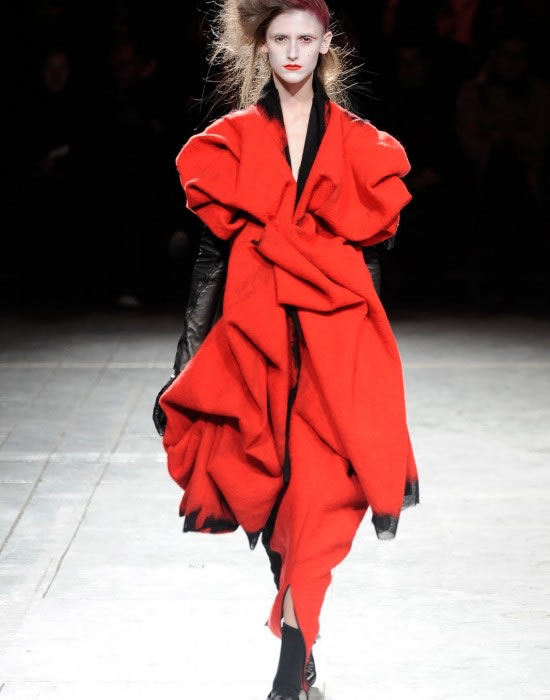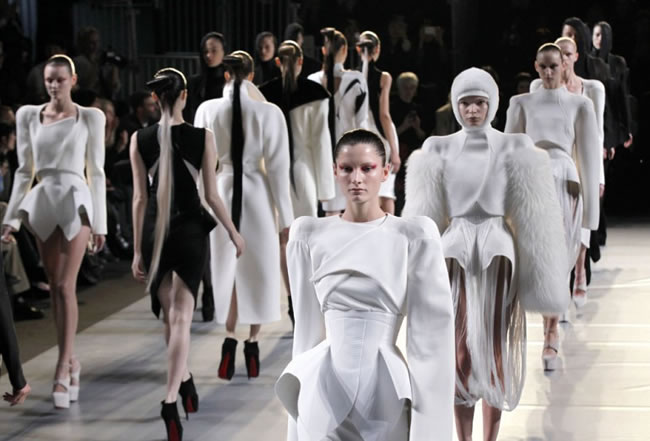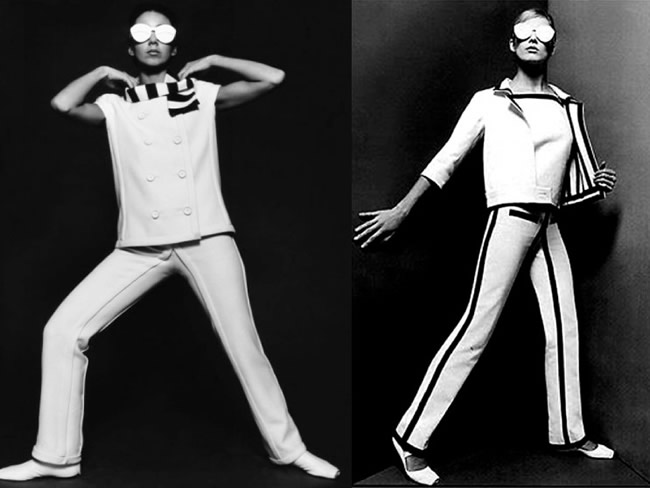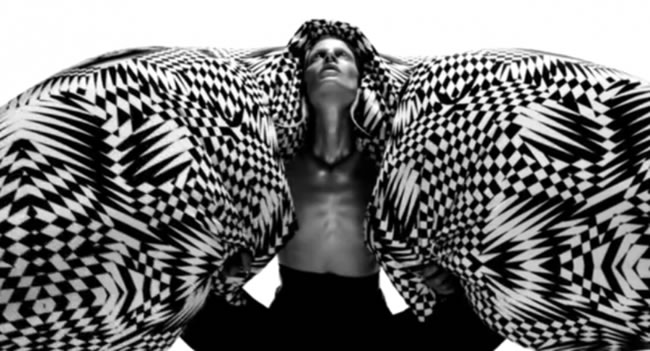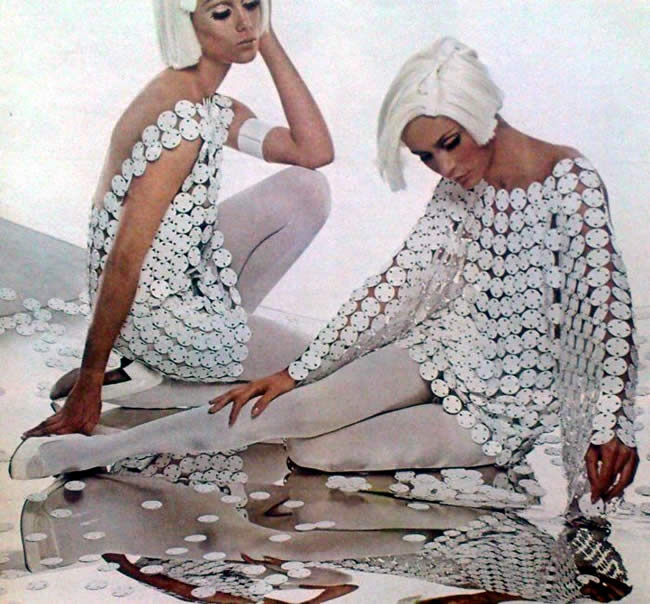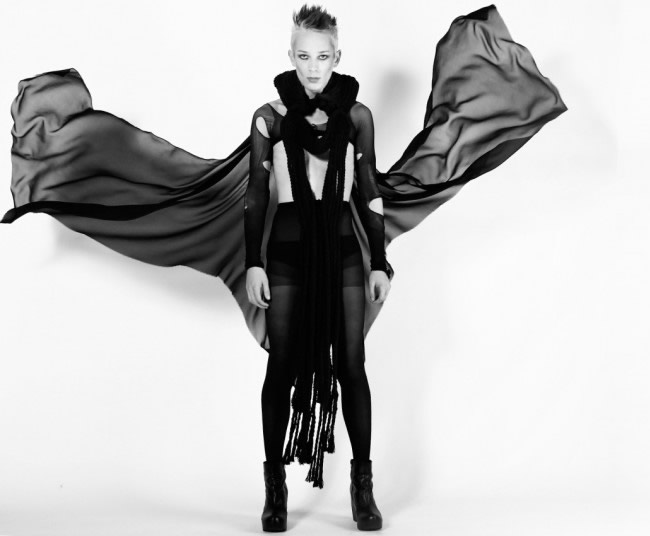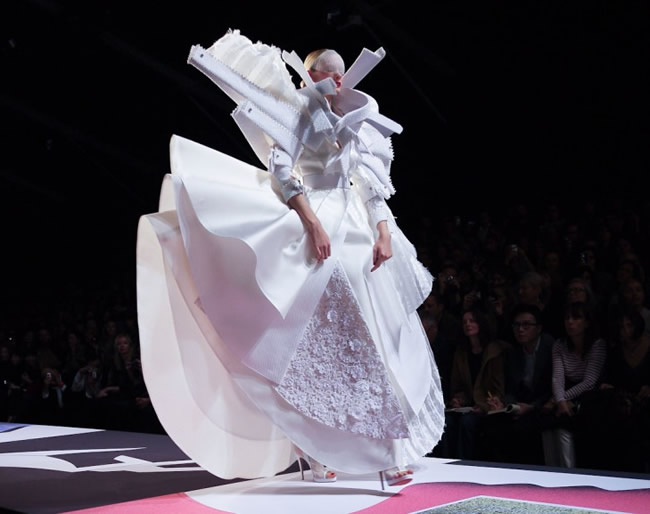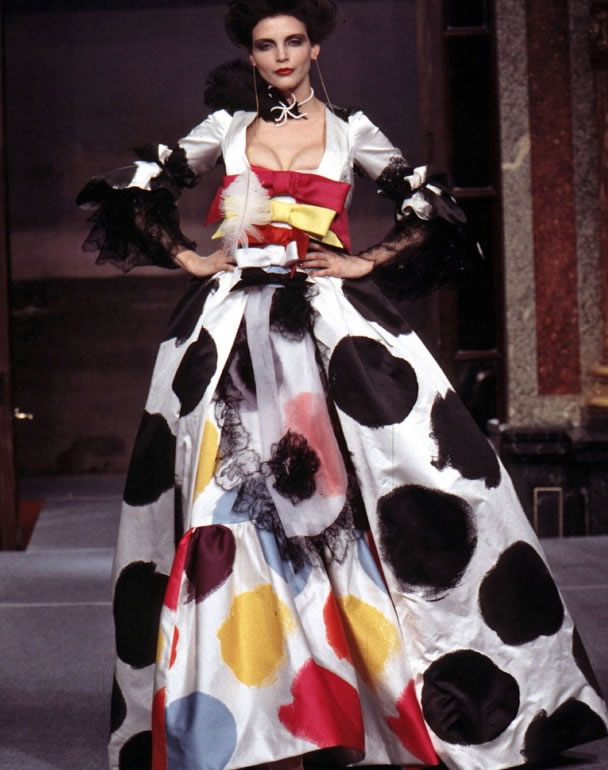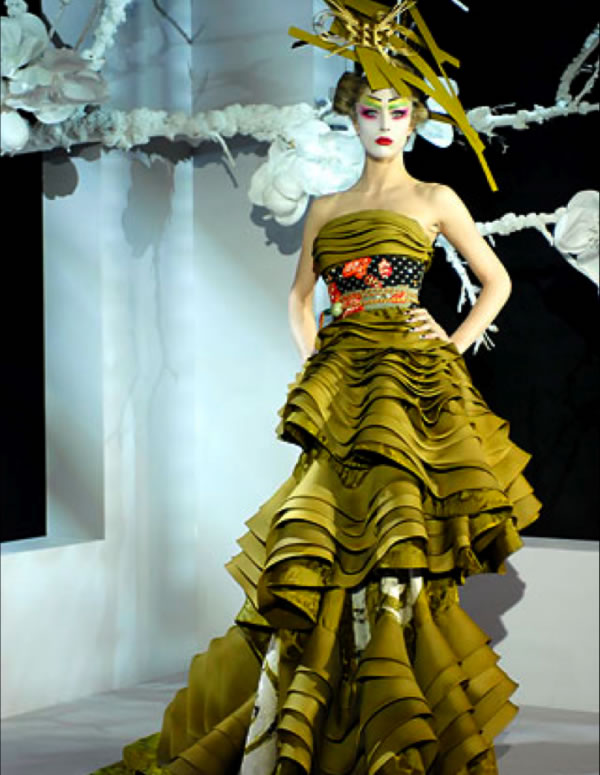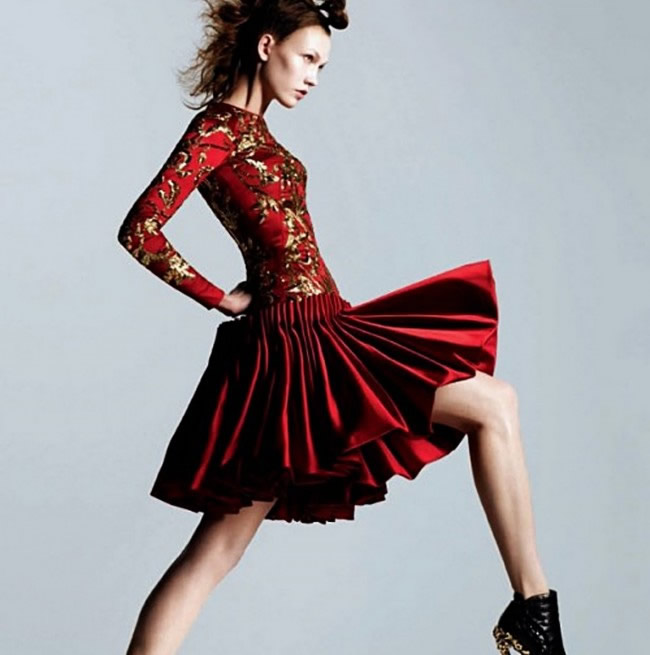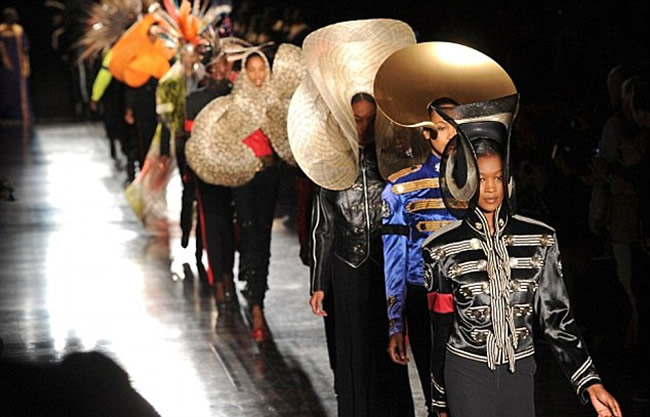 From Coco Chanel’s popularization of the suit to Christian Dior’s full-skirted New Look, the ongoing evolution of fashion has existed largely on the innovations of the visionaries. For those creative and revolutionary enough to concoct an idea backed up only by their own convictions, some have managed not only to enter the mainstream of fashion but be embraced wholeheartedly by its capriciousness.
From Coco Chanel’s popularization of the suit to Christian Dior’s full-skirted New Look, the ongoing evolution of fashion has existed largely on the innovations of the visionaries. For those creative and revolutionary enough to concoct an idea backed up only by their own convictions, some have managed not only to enter the mainstream of fashion but be embraced wholeheartedly by its capriciousness.
While many designers stay within the familiar bounds of what’s been deemed marketable and find their client base in clothing that is wearable and flattering, there are other designers whose nearly surrealistic convictions have put them a little outside of the mainstream. Though a thick line exists between ready-to-wear and the avant-garde, a few designers have opted to leave their clothing with the mark of something a bit more extraordinary.
Dutch designers Viktor & Rolf have made art and the artifice of the fashion world a source of inspiration, creating clothing and runway shows that were not necessarily appreciated or understood, while Vivienne Westwood, a designer who has been in the business for more than four decades, is largely responsible for the development of punk fashion, which is nearly inseparable from its music. Whether they’ve managed to bridge the gap between art and life in the present or changed the shape of fashion’s future possibilities, the following have defined their aesthetic and stood out as the singular purveyors of their own distinct ideas.
Yohji Yamamoto
Born in Tokyo, Japan on October 3, 1943, designer Yohji Yamamoto obtained a degree in law before he went on to pursue fashion design at Bunka College. With an impetus to change the idea of what could constitute women’s fashion, Yamamoto set out to make “men’s clothes for women” and debuted his first collection in Paris in 1981. Immediately making waves in the fashion world with his oversized silhouettes, Yamamoto’s androgynous style and deconstructed look signalled something of a revolution in design. While Yamamoto has worked with designers like Adidas and Hermès, he remains a distinctive designer for carving out his own voice.
Thierry Mugler
Born on December 21, 1948 in Strasbourg, France, Thierry Mugler focused more on drawing and dancing for the Rhin Opera in his youth, but upon moving to Paris at age 24, he began his career as a designer. After working with many ready-to-wear fashion houses, Mugler opened his own store in 1978 and won over fans with his clean, sophisticated designs. He eventually gained more notoriety in the 1980’s when his clothes became defined by angular lines, shoulder pads and corsets and were often made with PVC, appearing as a homage to bondage. While Mugler’s has become a recognizable name in recent years for his fragrance Angel, his dramatic sense of the female form and his emphasis on exaggerating those lines has a had a strong impact on fashion.
Courrèges
Born on March 9, 1923 in Pau, France, it was designer André Courrèges that gave birth to the famed fashion house of Courrèges. After studying civil engineering and moving to Paris in 1925, Courrèges relocated to Spain and began working under the revered designer Cristóbal Balenciaga. Inspired by Balenciaga, Courrèges opened his own design house in 1961 and released the Space Age collection in 1964, which used materials like plastic and metal for garments that consisted of clean lines and geometric shapes, harkening to futurism and architects like Le Corbusier. While the aesthetic hit the fashion world like an explosion before the scene fell to hippie style, Courrèges design of items like go-go boots and the miniskirt have left their mark.
Gareth Pugh
Born on August 31, 1981, Gareth Pugh started his fashion career early on, working as a costume designer for the English National Youth Theatre before achieving his fashion degree at Central Saint Martins in 2003. Through features with Dazed & Confused magazine and word of mouth, Pugh debuted his first collection during London’s Fall 2006 fashion week. Drawing comparisons to Vivienne Westwood and Alexander McQueen, Pugh employs his unique aesthetic, exploring different shapes and volumes with materials like mink, parachute silk and synthetic hair. While he’s experienced difficulties making his work commercially viable, Pugh has already managed to create designs that have made him a famous name.
Paco Rabanne
Born as Francisco Rabaneda Cuervo in San Sebastian, Spain on February 18, 1934, Rabanne and his mother, Chief Seamstress for fashion brand Balenciaga, left Spain for Paris soon after the Spanish Civil War broke out in 1936. After being educated as an architect and going on to create jewellery items for Givenchy, Dior and Balenciaga, Rabanne concocted his first collection, the tongue-in-cheek title 12 Unwearable Dresses in Contemporary Materials in 1965. Utilizing materials like hard plastics, paper and metal for dresses and goggles that gave rise to the shockingly modern Space Age look, Rabanne was not the only designer to explore this new aesthetic, but he is a pioneer in the movement towards modern that was a hallmark of the late 1960’s.
Comme des Garçons
French for the phrase “Like Boys”, the international brand Comme des Garçons was started in 1969 by Rei Kawakubo in Tokyo, Japan. While the label became immediately successful in Japan for it’s no-nonsense straight-edged viewpoint on women’s design, it wasn’t until the 1981 show in Paris that the brand broke through. With a simplistic scheme of black, white and gray, and a deconstructed look, Kawakubo garnered a new kind of fashion fan. Though her 1996 collection titled Dress Meets Body, Body Meets Dress was largely unpopular for its padded dresses that altogether altered the shape of the body, her unique take on the possibilities of femininity has inspired new ideas of gender identity in fashion.
Viktor & Rolf
Comprising one of the fashion’s most avant-garde partnerships, Viktor Horsting and Rolf Snoeren of The Netherlands met at the Arnhem Academy of Art and Design before moving to Paris in 1993 to accost the fashion world. Early on, Viktor & Rolf were much talked about for their conceptualism, from bottling and marketing the Viktor & Rolf Le Parfum fragrance that didn’t exist to throwing a fashion show in 1995 called The Manifestation of Emptiness that featured gold garments hanging from invisible thread, more installation than anything. While the design duo have moved into ready-to-wear in recent years to further develop their brand, their surrealistic designs and divergent take have made them a design name on the periphery worth knowing.
Vivienne Westwood
Among the most punk rock of designers, Vivienne Isabel Swire was born on April 8, 1941 in Tintwistle, Derbyshire. While Westwood moved to London at 17 and initially studied at Harrow School of Art, she soon coupled up with future Sex Pistol’s manager Malcolm McLaren, making clothes and designs for his SEX boutique on King’s Road. As the fashion centre of London’s punk scene, Westwood is largely responsible for the punk look that includes safety pins, razor blades and the familiar tartan fabric. While she has worked her way into the mainstream of fashion, her feisty designs and hard-edged attitude have made her one of fashion’s most famed rabble-rousers.
John Galliano
It was John Galliano’s mother, a Flamenco teacher in Gibraltar, Spain, who provided him with his initial interest in fashion for the outlandish outfits she dressed him in. Born on November 28, 1960, Galliano and his family moved to London when he was six, and in 1984, he graduated from Central Saint Martins College of Art and Design. While his early design career was brought to life by a series of financial backers, it was after a spate of upsets and a bankruptcy that Galliano captured the attention of Vogue’s Anna Wintour. Making his fashion statements and bold declarations known, Galliano was made head designer of Givenchy in 1995 before moving to Christian Dior in 1997. With his fantastical designs, history inspired collections and dedication to the theatrical aspects of fashion, Galliano remains among the most outlandish designers in history.
Alexander McQueen
There are few modern designers that are as simultaneously influential and avant-garde as Lee Alexander McQueen, born on March 17, 1969 in London, England. Dropping out of school at 16, McQueen started out early in the bespoke tailoring shops of Savile Row before being named Chief Designer for Givenchy in 1996, a position that won him numerous accolades before he went out on his own in 2001 to pursue his own ideas of fashion. As one of the iconoclasts of the design world, McQueen was well known and lauded for his invention of the low-rise “bumster” pants and the drama and extravagance of his runway shows. While McQueen committed suicide in February 2010, his fiercely individual aesthetic has made him one of fashion’s giants.

